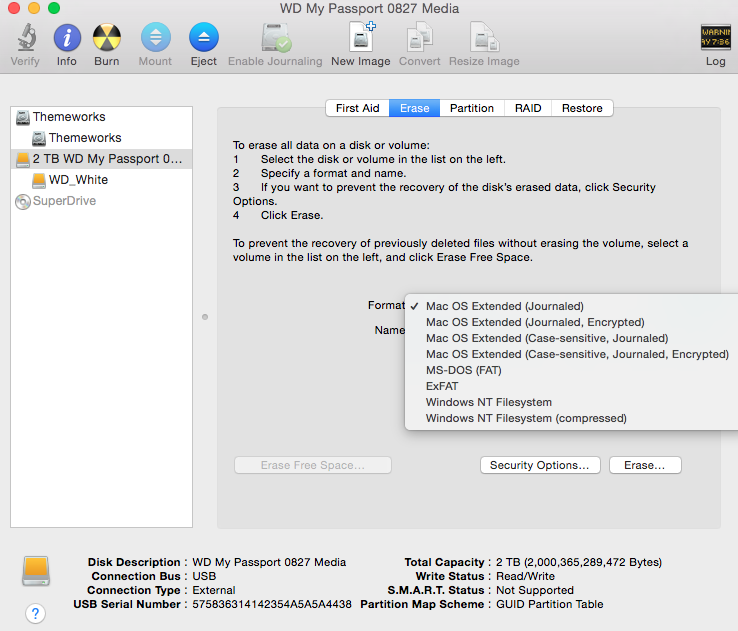

2 gigs is good for about 9 minutes of DV capture.

Using the drive for FCP (and encoded files for DVD SP) could cause problems. It is possible that your new cross platform hard drive could have a 2 gig file size limit. This is true, but because the drive is formatted for cross platform compatibility, some stability and facility issues could arise. When you purchase a new hard drive for your Mac, either SATA/ATA (internal) or FireWire (external) the box that the drive comes in will likely tell you that the drive will run on both Macs and PCs. With FireWire external hard drives reaching one Terabyte in size, partitioning the drive can make project and file management much more manageable. I typically partition into two volumes, one for FCP Captured media, the second for DVD SP projects, for Builds and MPEG 2 encoded files. Partitioning can be used for organization purposes, i.e., each volume could be used as a media (scratch) drive, each for a different FCP Project. With hard drives getting bigger there are reasons why you might want to partition a hard drive. You can create up to 16 different partitions on a hard drive, each one can be of different size and format, even including the 'MS-DOS' format for use with PCs on a network. Partitioning a hard drive is the process of dividing a hard drive into separate, discrete sections, called 'volumes'. WARNING: Formatting the drive will erase all data on the drive, so you should copy any data you want off the drive prior to formatting.Formatting & Partitioning a Hard Drive in OS Xįormatting & Partitioning a Hard Drive in OS X - Tiger and Leopard

If APFS is not available then the drive is in MBR and not GUID Partition Map. NOTE: Make sure that Scheme is set to GUID Partition Map and not Master Boot Record (MBR). Check step 2 to confirm Disk Utility is Showing All Devices NOTE: If you don’t see Scheme, then make sure that all devices are showing and the non-indented entry is selected. Select the non-indented entry, you will see Media in the nameĬlick the button labelled Erase in the menu which will bring up this window.Click View in the upper left and select Show All Devices.To open Disk Utility - Open Finder > Applications > Utilities > Disk Utility IMPORTANT: Reformatting the drive will erase all data on the drive, so you should copy any data you want off the drive prior to formatting. Click here to see other formatting options for your operating system.Looking for a different formatting option?
FORMAT HARD DRIVE FOR MAC OSX WINDOWS
If you need to go between macOS and Windows then format your drive ExFAT


 0 kommentar(er)
0 kommentar(er)
